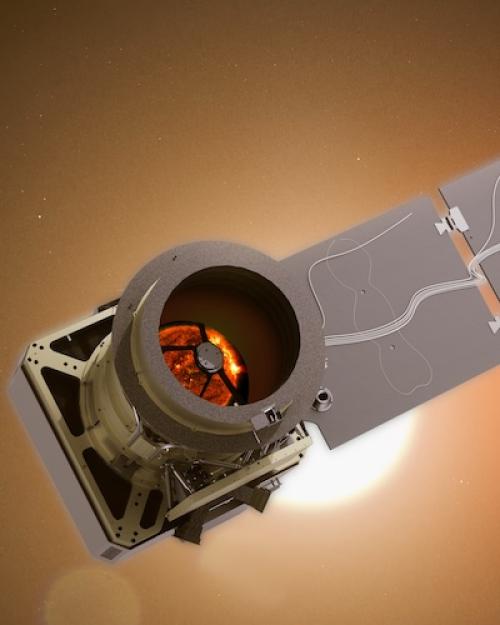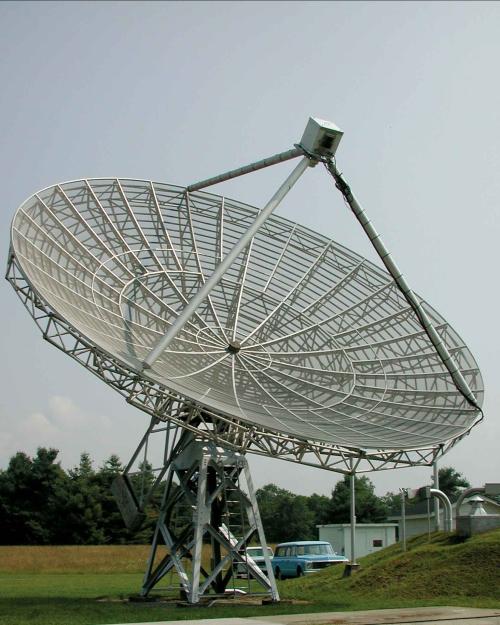An international team of researchers has revealed new evidence on the nature of mysterious fast radio bursts (FRBs) – objects in space that produce brief, intense flashes of radio waves from distant galaxies.
Astronomers from Cornell, West Virginia University, Caltech, Western Sydney University and CSIRO, Australia’s national science agency, contributed to the study which shows, for the first time, a reversible magnetic field around an FRB.
Published today in the journal Science are observations of a repeating FRB, dubbed “20190520B” made over a 17-month period using the Green Bank Telescope in West Virginia and CSIRO’s Parkes radio telescope in Australia.
The study found FRB 20190520B is surrounded by dense plasma that is not only highly magnetised but also highly turbulent, with the direction of the magnetic field changing twice during this period – a phenomenon never observed before.
“The dramatic changes in the magnetic field strength and radio wave scattering seen over a few months point to the complicated and dynamic environment of this remarkable repeating fast radio burst source,” said co-author Shami Chatterjee, Ph.D. ’03, research professor in astronomy in the College of Arts and Sciences. “These new observations are another step forward in understanding the remarkable engines and the diversity of fast radio bursts.”
First discovered in 2007 by astronomers using the Parkes telescope , FRBs have since become one of the most active areas of research in modern astrophysics. However, despite extensive efforts, scientists are still uncertain about their exact origin.
“We know that FRBs originate from sources in distant galaxies,“ said Shi Dai, lead co-author from Western Sydney University. “This makes FRBs unique tools to probe a range of astrophysics, such as ‘missing’ matter in between galaxies, the expansion of the Universe, and astrophysics in dense and highly magnetised environments.”
“We’ve been studying this particular FRB source for several years now, and it continues to surprise us,” said co-author Stella Ocker, a Cornell doctoral student in astronomy. “In addition to these extreme magnetic field reversals, FRB 20190520B also shows a large amount of scattering from its local environment. Scattering traces fluctuations in the density of gas around the FRB source, and our group at Cornell has found that the scattering of this FRB is quite unusual.”
Ocker was lead author on a paper published earlier this year in MNRAS that reported their team’s discovery that the scattering of FRB 20190520B changes dramatically on minutes-long timescales. Such rapid changes in scattering had not been observed from an FRB before.
“This new finding of magnetic field reversals adds to our growing picture of an extremely complicated, energetic system of gas surrounding the FRB source,” said Ocker. “Ultimately, we hope that continued monitoring of the magnetic field and scattering properties of this FRB will allow us to pin down its physical origin.”
Over the course of the study, the research team detected more than 100 bursts from FRB 20190520B, and successfully detected polarised emission in 13 bursts. Significantly, these polarised bursts revealed the direction of a magnetic field around the source of FRB 20190520B changed twice during this short period of time.
“One of the possibilities that we proposed is that the FRB source is a binary system with a star, which has strong stellar wind and a strong magnetic field. As the FRB source orbits the star, it moves in and out from the wind, which can explain our observations,” said co-author Miroslav Filipovic of Western Sydney University,
The researchers are now planning to conduct further observations of the FRB utilising the Green Bank telescope, FAST in China, and the Parkes telescope in Australia, among other instruments, to better understand the object’s nature.




